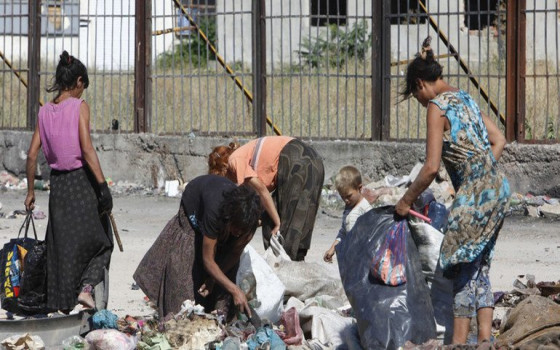
Hunger hotspots include countries such as Palestine, Sudan, and Yemen, with concerns about Syria and Somalia amid soaring commodity prices. The FAO predicts an 8% increase in the global food import bill.

- Europe and Arabs
- Friday , 14 November 2025 9:40 AM GMT
Rome – Brussels: Europe and the Arabs
The Food and Agriculture Organization (FAO) revealed in a recent report that the global food import bill is expected to rise by 8% in 2025, reaching $2.22 trillion. This marks the second consecutive annual increase after a slight decrease in 2023.
The report indicated that the price hike is primarily due to a significant surge in the prices of high-value commodities, with coffee, cocoa, tea, and spices experiencing a 34.5% price increase. This rise is attributed to the challenging climatic conditions faced by major producing countries, including Brazil, Indonesia, and Vietnam for coffee, and Ivory Coast and Ghana for cocoa. According to a report published by Euronews, the import bill for dairy products is also expected to see a sharp increase of 16.4% next year, driven by rising global demand and declining supply. Climate volatility, increased production costs, and the spread of local animal diseases have exacerbated this crisis. Meanwhile, vegetable oil prices continued their upward trend, rising by 0.9% in October to reach their highest level since July 2022.
Experts anticipate that global consumption will outpace production, particularly given the decline in soybean cultivation in Argentina, India, Ukraine, and the United States.
Grains and Sugar Ease Pressure
Conversely, declining grain and sugar prices are easing pressure on import bills. The FAO Sugar Price Index fell by 5.3% in October, reaching its lowest level since December 2020, driven by strong production in Brazil, growth prospects in Thailand and India, and lower crude oil prices.
The Dairy Price Index also declined by 3.4% in October, due to lower prices for powdered milk and butter, and increased exports from the European Union and New Zealand. The Meat Price Index fell by 2% in the same month, following eight consecutive months of increases, with sharp drops in pork and poultry prices, while beef prices continued their upward trend due to strong global demand. Global cereal production is projected to reach a new record high of 2.990 billion tons in 2025, a 4.4% increase from the previous forecast of 2.971 billion tons. This upward revision is driven by expectations of higher prices for all major cereals, with maize and rice production reaching unprecedented levels. Abundant wheat, maize, and rice harvests are expected to ensure sufficient market supply.
Regarding fertilizers, the report indicates that consumption increased during the 2024/2025 season, following a period of decline due to availability and pricing issues. The price of the reference basket of fertilizers remained at $489 per ton in September, a 40% decrease from its peak in April 2022, but still higher than 2024 levels. Low-income countries are projected to reduce their food import spending by 0.2% compared to 2024, while sub-Saharan Africa is expected to experience a slight increase in its import bill. Warnings of Worsening Food Insecurity
Meanwhile, the Food and Agriculture Organization (FAO) and the World Food Programme (WFP) have warned of a major food emergency, predicting that acute food insecurity will worsen in 16 countries and territories by May 2026, putting millions of lives at risk.
The FAO's "Hunger Hotspots" report identified six countries at risk of famine or catastrophic hunger: Sudan, Palestine, South Sudan, Mali, Haiti, and Yemen, where some communities are expected to reach or approach famine levels.
Other countries of grave concern include the Democratic Republic of Congo, Myanmar, Nigeria, Somalia, Syria, Afghanistan, Burkina Faso, Chad, Kenya, and the situation of Rohingya refugees in Bangladesh.
The report also highlighted the plight of Rohingya refugees in Bangladesh. Families in these regions suffer from acute food insecurity, unable to meet their basic nutritional needs. They often resort to desperate measures, such as skipping meals or selling essential belongings. In Phase 4 (Emergency) and Phase 5 (Disaster/Famine), hunger becomes life-threatening.
Máximo Torero, Chief Economist at the Food and Agriculture Organization (FAO), affirmed that "the recovery in global food production represents a positive turning point for market stability."
He added, "Behind these figures, risks remain, such as climate variability or volatile trade relations, which could rapidly reshape global supply and demand."
The FAO warned that "climate variability, geopolitical instability, and challenging financing conditions maintain the risk of higher import costs, particularly in the poorest regions."
In this context, WFP Executive Director Cindy McKean stated, "Famine is not inevitable. We have the tools and knowledge to prevent it, but we need the resources and political will to act immediately."












No Comments Found